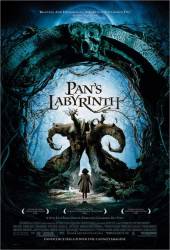
Question: All realistic indication by the end of the movie points to the fantasy actually being real, based on strong evidence. (Such as the magical door and chalk, etc.) Is there any strong theories that the fantasy is not real? I know is is ultimately up to the viewer to decide, I am just curious as to whether or not there is any concrete proof the fantasy might not be real.
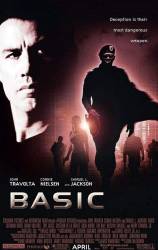
Question: Kendall was really part of 8. This is evident as he was rescued by Pike but went along with the story that he was rescued by Dunbar. Also, that Dunbar was in interrogation but knowing it was really Pike. He also uses the phrase, get your story right. He drew an 8 to indicate that he was part of the organization. He was rescued by Pike because he was part of 8.
Answer: First of all, what's the question? Second, Kendall was indicating that Section 8 was involved because they had the reputation of being a renegade outfit, to deter the fact the he was part of the drug smuggling gang that was operating within the military base.
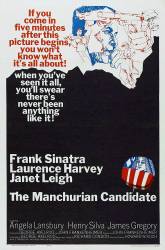
Question: The whole plot of this movie makes no sense. What was the purpose of having all the soldiers "brainwashed' when they just used one to carry out what they wanted? Plus, why go to the trouble of doing all this when they could have just hired an assassin? Plus, how did they know, in 1952, that this man would be chosen to be the Vice-President?
Answer: It's confusing. The entire platoon was brainwashed to be witnesses and verify the fabricated story that Raymond was a "war hero" who saved their lives. Raymond was unknowingly mentally programmed to become a sleeper agent to be used when needed by the Russians or Chinese. He was chosen because Raymond's monstrous mother, Eleanor Iselin, was married to a ruthless, ambitious "Joseph McCarthy-esque" U.S. Senator. She was propelling her husband into being their party's presidential candidate and contacted Communist agents to arrange for her husband's political rival to be assassinated. She was initially unaware that her son would be the chosen assassin. Raymond, being brainwashed, never realised he was a programmed assassin who would have no memory of executing his assignments. He apparently was recruited because of his step-father's political position. It is a rather incredulous plot, to say the least.
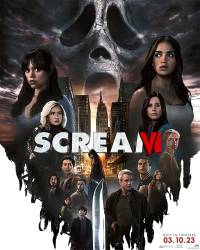
Question: The events of Scream VI take place around Halloween, but it doesn't specify what year. A news reporter said that the Woodsboro killings took place in 2022 as if they happened a year ago, and Scream VI was released in March of 2023. So, do the events of Scream VI take place on Halloween of 2022 or 7 months in the future after the film's release date?
Answer: Using some conjecture, if the film states the last killings took place in 2022 and treats it like "last year," you can assume it takes place around Halloween 2023. Films are allowed to take place in the future. They don't have to be set around their release date. So how is this a mistake?
Answer: I think this is more "trivia" than mistake. There's no error in a film taking place a bit further ahead in time than in its release date.

Question: How did the monkeys get onto the space ship and why were they so aggressive?
Answer: On the way from the Moon to Mars, the Cepheus interplanetary vessel receives an automated distress signal from a Norwegian bio-medical space station (that studies and conducts experiments on Earth animals in the deep-space environment). Apparently, a couple of very powerful and temperamental adult baboons escaped from their cages and killed everyone aboard the space station, feeding on their bodies. When the Cepheus answers the distress signal and arrives at the space station, the baboons attack and try to eat Captain Tanner and Roy McBride, also.
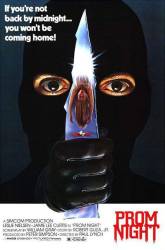
Question: Why in the world is Alex, when unmasked at the end, wearing lipstick? Symbolic or something?
Answer: Alex is not the typical one dimensional slasher serial killer, but rather a complex individual with conflicting motivations. The lipstick is a symbol that he is portraying the hurtful people from his past even as he kills them.
Answer: The film doesn't provide an answer (which I think is a good thing). My interpretation is that Alex has somehow absorbed his sister's spirit, symbolically (not literally), and is avenging her death *as* Robin, in a way. Her name is his last word before he dies. A scene was shot but cut which revealed that Robin and Alex were twins. That scene was added back to the television edit of Prom Night.
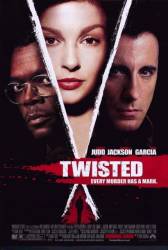
Question: What really happened to Ashley Judd's parents and why did Samuel L Jackson do what he did? Also, why did he start killing again? Was he planning on killing Ashley Judd as well?
Answer: He killed the parents because the mother was sleeping around and it was driving the father insane. He began killing Ashley Judd's lovers because he could see she was becoming like her mother.
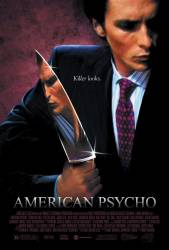
Question: Did Patrick really kill anybody or was it all in his mind? He killed a homeless man but there's no news report about it on TV. He murders Paul but is told Paul is in London. He severely beat and bloodied two prostitutes but no cops show up to arrest him. He murders Elizabeth and Christie but when he goes back to the apartment later, it is empty and put up for sale.
Answer: The situation is intentionally left vague. The homeless man being murdered wouldn't necessarily make the news in the time (there were over 4000 murders in 1989-90 when the book and movie are set). He and his friends are so alike that they continually mistake each other for others. The prostitutes would likely be loathe to call the police because they might be arrested themselves and he would likely get off with a much better lawyer.
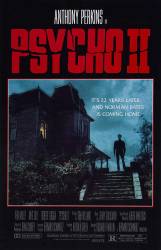
Question: Spoiler alert: this question gives away much of the first "Psycho" movie. In the original Alfred Hitchcock "Psycho" we witness Norman Bates murdering Janet Leigh/Marion Crane and Martin Balsam/Milton Arbogast, and very narrowly missing killing Vera Miles/Lila Crane. At the end of the movie we discover that Norman Bates had murdered his mother and her lover ten years previously. We are also told that he had killed two female guests at Bates Motel. Norman Bates is therefore guilty of six murders and one attempted murder. In Psycho II we find out that, after his crimes were discovered, Norman Bates was placed in a secure psychiatric institution for the criminally insane. This does seem plausible. But with such a criminal record, would he ever be released from incarceration?
Answer: Norman was found "not guilty" by reason of insanity. Therefore, once he is deemed to be no longer a danger to himself, or to others, and is released from the mental institution, there is no crime he can be sent to jail for (i.e. he has no criminal record for the murders). I haven't done enough research to tell you if a serial killer in recent times has ever been found not guilty by reason of insanity and subsequently been released, but there are numerous accounts of people being released from mental institutions after committing murder that are then considered free.
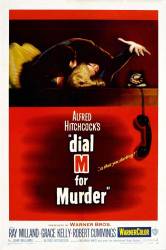
Question: After Margo was convicted, why did Tony move one of their beds into the living room?
Chosen answer: It's mostly so the audience can see more of Tony's underlying character. This is Margo's bed, and Tony wanted it separate from the bedroom that they shared as husband and wife. Tony is "emotionally divorcing" himself from Margo as he is about to start a new life as a single man. Leaving the bed in the bedroom would serve as a reminder of his guilt in framing his innocent wife for a murder she did not commit. The bed is likely parked there until he can get rid of it.
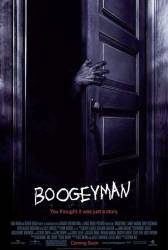
Question: In the preview for this movie, there is chanting in the background of something that ends with 'When you see him count to five, pray that you will stay alive.' What, if anything, is this?
Answer: This is a made up children's rhyme just like the "Nightmare on Elm Street" series has "One, two, Freddy's coming for you, three, four, better lock the door,..."
Answer: It's from the TV Spot for the Boogeyman from 2005. This is the clip that it comes from. The rhyme haunted me for a long time and I'm glad I'm not the only one who remembers it! It goes: https://www.youtube.com/watch?v=0sCzBRCJXvU When you're scared just count to ten, you will feel all good again. When it's dark just count to eight, the Boogeyman will hide and hate. When you see him count to five, pray that you will stay alive.

Question: Why was Burke's arm bleeding when he was hiding on the vents near the ceiling of the record room?
Answer: In the scene before that he scraped and cut his arm on the file cabinet as he was closing it looking for information.
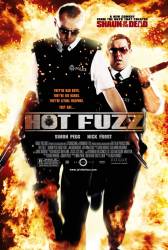
Question: How did Nick Frost pretend to stab Simon Pegg?
Chosen answer: In the pub Danny demonstrates using a ketchup packet to simulate stabbing himself in the eye. Later in the film he returns Nicholas Angel's notebook, hiding a ketchup packet in it. He stabs the pocket with the notebook, causing the ketchup to leak and simulate blood.

Question: When police scour the old neighbourhood, there is a shot of a man wearing some kind of huge metal suit. What was this suit used for? (00:46:53)
Answer: Most likely protective body armour.
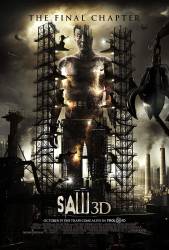
Question: Why does Dr Gordon decide to work with John? And why does he put himself, his daughter and wife in extreme danger?
Answer: He, his wife and his daughter were abducted before he decided to work with Jigsaw. He didn't put them in danger. As for why he decided to work with Jigsaw following his ordeal, like other characters in the franchise, he either developed a level of Stockholm syndrome or he concluded that Jigsaw's methods were right, or a combination of both.

Question: Early in the film, Rawhead Rex kills a farmer, but the farmer's pregnant wife gets Rex's attention and he goes toward the house. She runs upstairs to hide but the monster follows, cornering her in the bedroom. He reaches out to her, but then relents and spares her for some reason. The movie never really explains why. Can anyone explain why he let her live?
Chosen answer: Pregnant woman (and possibly women on their periods) are his weakness and the only thing he fears.

Question: When Mido was trying to come up with a screen name for Oh Dae-Su early in the movie, why was Dae-Su so interested/startled by the mention of "The Count of Monte Cristo"?
Answer: Perhaps because in the movie/book "The Count of Monte Cristo" that's what happened to him. In the book/movie the hero Edmund Dantes is renamed "the Count" in order to disguise that fact that he is Dantes after having broken out of jail. This way he is free to seek revenge on the ones that put him in jail under false charges.
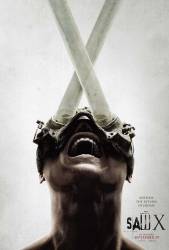
Question: What happens to the lady after the film ends that has her head in the hole? As during the film, she shows she has no morals. In the rest of the movies, you never hear her name mentioned or what happened to her. But surely, with him trapping her and taking the money at the end, it would piss her off enough to want to get the money back and seek revenge on him.
Answer: There's no definitive answer. It's left purposely ambiguous, presumably in case they want to bring the character back in the future. (There is a deleted scene on the Blu-Ray showing the door opening on its own once the countdown hits zero, so presumably she is able to escape.) As for her coming for him... we simply don't know. It's possible she'll show up again in a future film. But you also have to factor in that John has a LOT of evidence on her criminal misdeeds... so he likely could have her arrested and jailed if she comes for him.
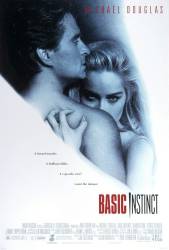
Question: Why did Catherine change her mind about killing Nick at the end? Obviously she was planning on killing him anyway, but she changed her mind only hours after ending their relationship when her book was finished and was of no further use. So why did she spare him? Was it because she fell in "love" with him?
Answer: There's no definitive answer to this and the ending is deliberately ambiguous and open to interpretation. The audience is left to speculate whether or not Catherine kills Nick, or if she intended to kill him but changes her mind because she loves him, or intends to kill him at a much later time, and so on.
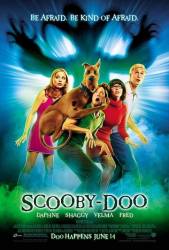
Answer: Evidence from the film: 1) The image of a ram appears frequently in the house, including over the mother's bed and the twisted growth of the tree. An image such as this suggests that the fawn was created from common images. 2) The first image is of the magical realm. The the following show Ofelia reading a fantasy book. This inidicates that the movie will be mostly from the point of view of a child who spends time developing her imagination. 3) The images of fascist, war-torn Spain are bleak aand desaturated while the images of the magical realm are bright. Even the monochromatic images of el Fauno are supersaturated. This filming technique suggests that Ofelia creates the fantasy. 4) At the end of the movie, the General cannot see Ofelia talking to el Fauno. Therefore, at least for him, the kingdom is fantasy. The proof exists for both. The flower at the end of the film has been cited as evidence that the magical world certainly exists but only for those who choose to see it. This means that the kingdom is both real and not real - a paradox.